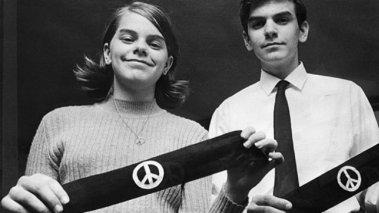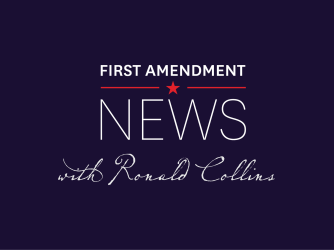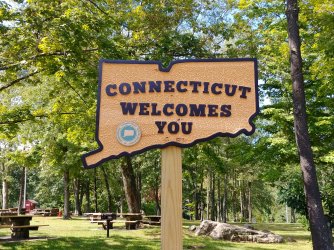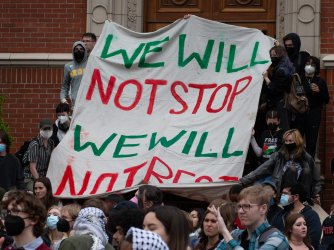Table of Contents
From black armbands to the Supreme Court: Mary Beth Tinker and student free speech rights

ACLU
WATCH: Mary Beth Tinker sheds light on her case and the state of student speech rights today, connecting the past with the present.
Her journey started with wearing a black armband to school and proceeded to the landmark Supreme Court case Tinker v. Des Moines Independent School District (1969), but it by no means stopped there: Mary Beth Tinker, namesake of the Tinker decision, continues to be a free speech icon.
Interviewed by Robert Corn-Revere, the eminent First Amendment attorney who represents FIRE’s Stand Up For Speech Litigation Project plaintiffs, Tinker sheds light on her case and the state of student speech rights today, connecting the past with the present.
Tinker sets the scene by noting that she and her siblings were raised in Iowa, where their father was a Methodist minister. Both of her parents believed in “putting faith into action,” she explained, and were actively involved in the social gospel movement. This led them to take part in the civil rights movement and the fair housing movement. It made sense, then, that all of the Tinker children were influenced by their parents’ advocacy and social consciousness.
“My parents came from World War II very concerned about the good people who say nothing and allow things, like Nazism, to take hold. So they really believed that you have to speak your conscience,” Tinker said.
When Mary Beth, her brother, and their friend Christopher Eckhardt saw the violent scenes of the Vietnam War on the news, they felt compelled to take a stand against the war. They decided to wear black armbands to school to mourn the dead on both sides of the war. Having learned of the planned protest, the school district preemptively banned armbands, so the students were suspended for wearing them. Unable to convince the school district that the armbands were protected forms of expression, the Tinkers decided to contact the American Civil Liberties Union and sue the school district.
Losing at both the district court and appeals court levels, the case seemed doomed. “I thought we would lose the whole thing,” said Tinker. “No big important judge is going to rule that kids can break the rules.”
Fortunately for free speech, the Supreme Court sided with the Tinkers, famously saying that “[i]t can hardly be argued that either students or teachers shed their constitutional rights to freedom of speech or expression at the schoolhouse gate.” The decision in Tinker v. Des Moines has served as the modern foundation for students’ right to free expression.
Though Tinker remains the best-known legal precedent for student rights, Tinker cautions that students must also recognize the effects of self-censorship. She said:
The fear of being unpopular is causing kids to censor themselves. I want to tell kids and encourage kids that popularity is not the most important thing because that can change. Look at me, I was suspended from my school in 1965. Last fall I went back to the school and they rolled out the red carpet. I have my very own locker at Harding Junior High—forever!
You can check out the full interview above, or on FIRE’s YouTube channel. While you're there, don't forget to subscribe to receive automatic notifications when new material is posted.
Recent Articles
FIRE’s award-winning Newsdesk covers the free speech news you need to stay informed.

How court rulings in Hong Kong and Australia threaten the global internet

Trump v. Merchan — Testing the limits of judicial contempt in criminal cases: 12 questions . . . and a just-released appellate ruling — First Amendment News 423

Another Connecticut town tramples Constitution with onerous town green rules


